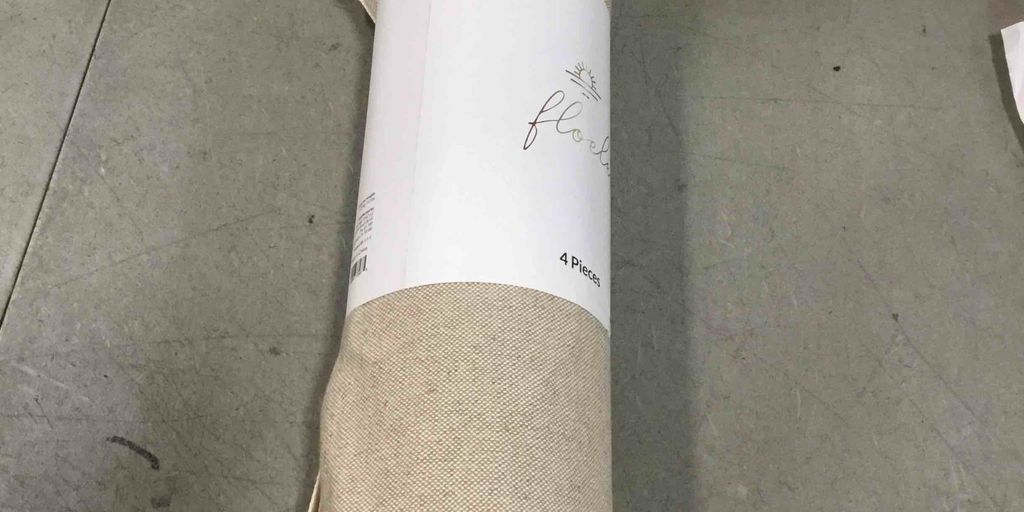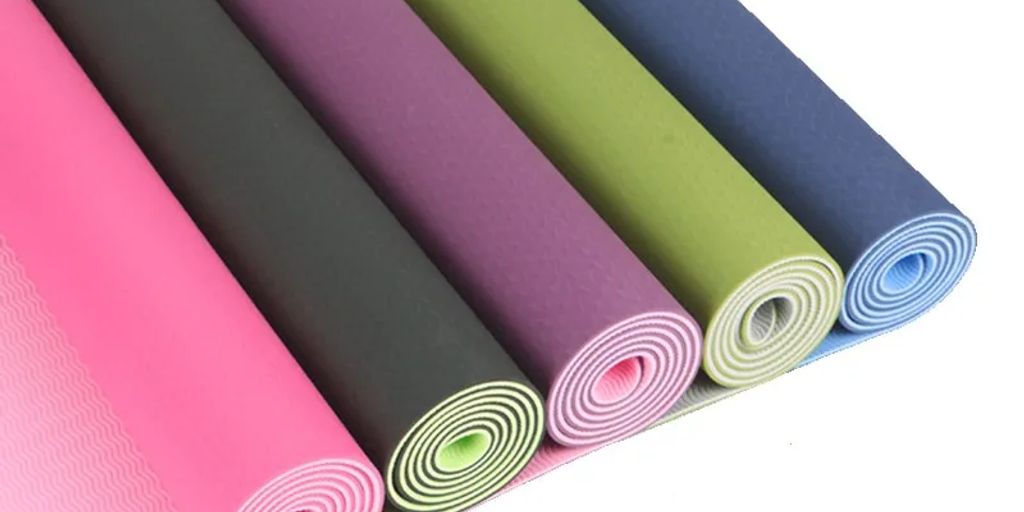
Finding the Perfect Yoga Mat Thickness for Your Practice
Choosing the right yoga mat thickness can make a big difference in your practice. Whether you're a beginner or a seasoned yogi, the thickness of your mat affects your comfort, balance, and overall experience. Understanding the different options and how they match with your yoga style is important for getting the most out of your sessions.
Key Takeaways
- Yoga mat thickness plays a crucial role in your comfort and stability during practice.
- Different yoga styles may require different mat thicknesses for optimal performance.
- The material of the mat can affect its durability and how it feels under your body.
- Personal preferences and body needs, such as joint protection, should guide your choice.
- Testing mats in-store or at home can help you find the perfect thickness for you.
Understanding Yoga Mat Thickness
Why Thickness Matters
Understanding different yoga mat thicknesses is crucial for a comfortable practice. The thickness of your mat can affect your balance, cushioning, and overall experience. A mat that's too thin might not provide enough support, while one that's too thick could make balancing poses harder.
Common Thickness Options
Yoga mats come in a variety of thicknesses, typically ranging from thin (about 1/16 inch) to thick (up to 1/4 inch). Here's a quick look at the common options:
- 1/16 inch (1.5mm): Very thin, great for travel, but offers minimal cushioning.
- 1/8 inch (3mm): Standard thickness, balances portability and comfort.
- 1/4 inch (6mm): Extra thick, provides more cushioning, ideal for those needing extra support.
Impact on Your Practice
The thickness of your yoga mat can significantly impact your practice. Thinner mats are often preferred for styles that require more stability and balance, like Vinyasa or Ashtanga. Thicker mats, on the other hand, offer more cushioning, which can be beneficial for slower-paced practices or for those with sensitive joints.
Choosing the right thickness can make a big difference in how comfortable and supported you feel during your yoga sessions.
Choosing the Right Thickness for Different Yoga Styles
Thickness for Hatha Yoga
For Hatha Yoga, a mat with medium thickness is ideal. Standard options include thin (1/16 inch), standard (1/8 inch), and thick (1/4 inch or more). A standard mat (1/8 inch) offers a good balance of comfort and stability, making it easier to hold poses for longer periods.
Thickness for Vinyasa Yoga
Vinyasa Yoga involves a lot of movement and transitions. A thinner mat, around 1/16 inch, can provide better stability and grip. This helps in maintaining balance during fast-paced sequences. However, if you need more cushioning, a standard mat can also work.
Thickness for Yin Yoga
Yin Yoga requires holding poses for extended periods, so a thicker mat (1/4 inch or more) is recommended. This extra cushioning provides the necessary support and comfort for your joints, making it easier to stay in poses longer without discomfort.
When choosing a yoga mat, consider the type of yoga you practice most often. The right thickness can make a significant difference in your comfort and performance.
Material and Thickness: How They Interact
Popular Yoga Mat Materials
Yoga mats come in various materials, each offering unique benefits. Common materials include PVC, rubber, TPE, and cork. PVC mats are durable and provide excellent grip, while rubber mats are eco-friendly and offer good cushioning. TPE mats are lightweight and easy to clean, and cork mats are naturally antimicrobial.
Material Durability and Thickness
The durability of a yoga mat often depends on its material and thickness. Thicker mats tend to last longer because they can withstand more wear and tear. For example, a 6mm PVC mat will generally be more durable than a 3mm TPE mat. However, the material also plays a crucial role; rubber mats, even if thinner, can be quite durable.
Eco-Friendly Options
For those who prioritize the environment, eco-friendly mats are a great choice. These mats are usually made from natural rubber, cork, or jute. They are biodegradable and free from harmful chemicals. Choosing an eco-friendly mat not only benefits the planet but also provides a safer surface for your practice.
When selecting a yoga mat, consider both the material and thickness to find the perfect balance of comfort, durability, and environmental impact.
Personal Preferences and Body Needs
Comfort and Support
When it comes to mat thickness, it isn't just a question of personal preference – it can make a difference to your practice from beginning to end. A thicker mat often provides more cushioning, which can be especially beneficial for those who need extra comfort during their sessions. Finding the right balance between support and comfort is key to a satisfying yoga experience.
Joint Protection
For individuals with sensitive joints, a thicker mat can offer much-needed relief. The extra padding helps to reduce the impact on knees, wrists, and other vulnerable areas. This can be particularly important for those who practice on hard surfaces. A mat that is too thin might not provide the necessary protection, leading to discomfort or even injury.
Portability Considerations
While thicker mats offer more comfort and support, they can be heavier and bulkier to carry around. If you travel frequently or attend classes outside your home, you might prefer a mat that is easier to transport. Balancing portability with the need for adequate cushioning is an important factor to consider when choosing your yoga mat.
Remember, the best yoga mat for you is one that meets your unique needs and preferences. Take the time to test different options and find the perfect fit for your practice.
Testing and Evaluating Yoga Mat Thickness
In-Store Testing Tips
When you're at the store, it's important to try out different mats. Stand on the mat and see how it feels under your feet. Try a few poses to check if it provides enough support. Remember, standard mats are about 1/8 inch thick, but you can find mats that are as thin as 1/16 inch or as thick as 1/4 inch. Thicker mats provide more cushioning, which can be great for your joints.
Home Trial Methods
If you buy a mat online, you can still test it at home. Roll it out on a hard floor and do a short yoga session. Pay attention to how your body feels during and after the practice. Does the mat offer enough comfort and support? If not, you might need a different thickness.
Feedback from Instructors
Yoga teachers can offer valuable advice on mat thickness. They have experience with different mats and can suggest what might work best for your practice. Don't hesitate to ask for their input during your next class.
Testing different yoga mats can help you find the perfect one for your needs. Take your time and consider all the factors before making a decision.
Caring for Your Yoga Mat
Cleaning Tips for Different Thicknesses
Keeping your yoga mat clean is essential for both hygiene and longevity. Regular cleaning helps prevent the buildup of sweat, dirt, and bacteria. For thicker mats, use a gentle cleanser and a soft cloth to avoid damaging the material. Thinner mats can be cleaned with a mild soap solution and rinsed thoroughly.
Storage Solutions
Proper storage can extend the life of your yoga mat. Roll your mat loosely to avoid creases and store it in a cool, dry place. If you have a thicker mat, consider using a strap or bag for easy transport and protection. Avoid leaving your mat in direct sunlight, as this can cause the material to break down faster.
Extending Mat Lifespan
To make your yoga mat last longer, rotate it regularly to ensure even wear. Avoid using shoes on your mat, as they can cause tears and abrasions. Additionally, try to practice on a clean surface to minimize dirt and debris. By following these simple steps, you can keep your mat in great condition for years to come.
Taking good care of your yoga mat not only enhances your practice but also saves you money in the long run by reducing the need for frequent replacements.
Taking care of your yoga mat is essential for a great practice. Regular cleaning keeps it fresh and extends its life. For tips on how to maintain your mat, visit our website. You'll find everything you need to keep your mat in top shape.
Conclusion
Choosing the right yoga mat thickness is key to a comfortable and effective practice. Whether you prefer a thin mat for better balance or a thicker one for extra cushioning, the decision should match your personal needs and the type of yoga you do. Remember, the best mat for you is the one that makes you feel good and supports your practice. Take your time, try out different options, and you'll find the perfect fit for your yoga journey.
Frequently Asked Questions
Why is the thickness of a yoga mat important?
The thickness of a yoga mat can affect your comfort, stability, and support during practice. A mat that's too thin might not provide enough cushioning, while one that's too thick can make it harder to balance.
What are the common thickness options for yoga mats?
Yoga mats typically come in thicknesses of 1/16 inch, 1/8 inch, 1/4 inch, and 1/2 inch. Each thickness offers different levels of comfort and support.
How does the thickness of a yoga mat impact your practice?
Thicker mats offer more cushioning, which is great for seated and lying poses. Thinner mats provide better stability and are ideal for standing poses and balance exercises.
Which thickness is best for Hatha Yoga?
For Hatha Yoga, a mat with medium thickness, like 1/8 inch or 1/4 inch, is usually ideal. It provides a good balance of comfort and support.
Are eco-friendly yoga mats available in different thicknesses?
Yes, eco-friendly yoga mats come in various thicknesses. You can find them made from materials like natural rubber, jute, and cork, which are good for the environment.
How can I test the thickness of a yoga mat before buying?
You can test yoga mats in stores by doing a few poses on them. Pay attention to how your joints feel and how stable you are. Some stores also offer trial periods for home testing.

